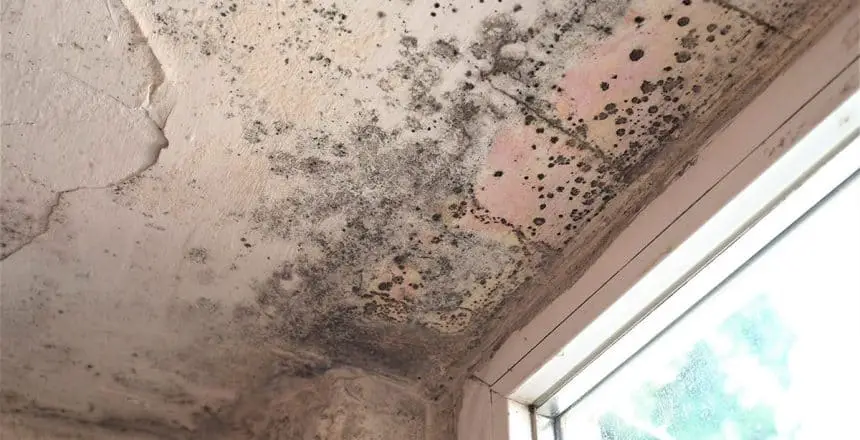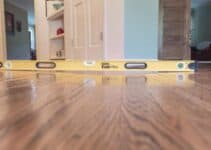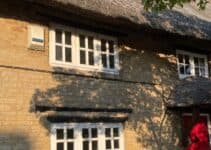Old cottages can be great to live in, but they come with a range of issues worth knowing about. One of the biggest (and potentially hardest to deal with) is mold.
If you’ve ever lived in an old building, you’re likely already familiar with the problem.
In this article, we’ll look at why cottages can have mold and what you can do about it.
Do Cottages Have Mold?
Not all cottages have mold but it’s a common occurrence in older buildings.
Mold happens in spaces that are damp and have poor airflow, which can often happen in cottages for a variety of reasons.
Although all homes are potentially susceptible to mold, it’s a lot more noticeable in old buildings.
But why is this? Well, there are a few reasons:
Poor Ventilation
The first reason for mold in cottages is poor ventilation. For example, older buildings won’t have efficient HVAC or heating systems, meaning air doesn’t circulate properly around them.
Ensuring there’s proper airflow helps dry out damp areas, meaning the mold is missing at least one of its requirements for growth.
Modern Updates
Arguably the bigger issue with cottages when it comes to mold is modern updates. In the past, cottages would have thick stone walls and single-glazed windows.
While this would make them colder overall, it meant buildings could “breathe”.
Excess water vapor – caused by people breathing, cooking, etc. – could escape through the brickwork and cracks around windows.
Overall, this was actually better for the building.
But modern additions, such as double glazing and wall renderings, reduce the cottage’s ability to shed excess water vapor.
This then collects in cooler areas and generates mold. It’s why you’ll often see mold on outside-facing walls and around windows.
Old Building Techniques
On the flipside, we must consider older building techniques used in cottages. As mentioned, these include exposed brickwork and single-glazed windows. But we must also think about the way the whole building is constructed.
Specifically, cottages were built with small windows, low doorways, and thick walls.
This is so they could retain heat generated from inside, but it also means that very little sunlight can get into the cottage.
In turn, rooms are darker and don’t have the right kind of exposure to sunlight to help dry out damp areas.

Local Environment
Finally, there’s the issue of the cottage’s location. Unsurprisingly, homes in wetter areas have a higher risk of mold than those in drier ones.
Lakeside cottages are a good example of where you might experience more mold, or simply cottages in places where it rains a lot.
There’s very little you can do about this factor, however. Instead, you’d be best to address issues you can control, such as the temperature and ventilation inside your cottage.
Can Mold in Your House be Harmful?
The bottom line is that mold can be harmful to your health. What you see growing on the walls isn’t harmful as such, but it releases spores and toxins into the air, and this is what can affect your health.
The link between mold exposure and health is well documented, and the basic symptoms include:
· Irritated eyes
· Runny nose
· Wheezing and breathing difficulties
· Sneezing, coughing
Exposure to mold can also make the symptoms of respiratory issues worse, such as asthma or allergies. In very rare cases, mold exposure can lead to aspergillosis.
This is only caused by Aspergillus mold, which is the powdery kind you find on food. The more common type to find in damp places around the home is Alternaria.
Understanding Mold Exposure
While it’s obviously not great to be exposed to mold, it’s worth understanding the signs of risk in more detail. First, there’s frequency and length of exposure.
If the mold is somewhere like a garage or unused room, for example, your risk is comparatively lower than if it’s in your bathroom.
Another important factor is working out whether the mold is active or not. Mold can stain paint and furniture, leaving marks long after it’s actually died. Some warning signs of active mold include:
· The patch is visibly growing over the course of several days
· It looks bushy or hairy – signs it’s blooming
· The patch is visibly wet
Inactive mold will easily brush off the surface on which it grew. Obviously, you’ll want to avoid doing this, as you don’t want to distribute spores.
Generally speaking, active mold entering its bloom phase has the highest risk. But inactive mold can release spores, so you’ll want to avoid touching it as much as possible.
How Do You Get Rid of Mold in a Cottage?
Luckily, getting rid of mold in a cottage isn’t too difficult. The bigger challenge is preventing it from coming back, as this involves changing the environment it grew in.
We’ll discuss this in more detail below.
To get rid of mold in your cottage, you’ll want to try:
Mold Killer
The most obvious solution is mold killer, which is readily available online and in DIY stores. It’s usually very heavy-duty stuff, so make sure you’re wearing appropriate safety gear.
You’ll want an N-95 facemask or higher, as this is rated for mold spores.
Then, just follow the instructions on the bottle. It’s usually as simple as wipe it on the mold patch, leave it to sit, and then wash it off.
This should kill any active mold, and you can then just paint over the remaining stain.
Bleach
Household bleach can help kill mold but it usually won’t remove the stain. Add ¾ cup of chlorine bleach to a gallon of water and scrub the moldy surface.
Leave it for 5 minutes and then wipe off. Allow the area to completely dry.
Prevent Mold from Growing
The easiest factor to control to prevent mold from growing is moisture levels. If possible, you’ll want to make the area warmer and brighter too, but this is obviously harder to control.
Your first step should be to buy a dehumidifier. Put one in every room that has a mold problem and run regularly.
This is by far the most effective option for controlling mold, especially in a cottage that has ventilation issues.
Use Mold-Resistant Paint
If you’ve treated a patch of mold and need to cover the stain, use mold-resistant paint. As the name suggests, it’ll prevent mold from growing on it due to chemicals included in the paint.
You’ll need to ensure the mold is completely dead first and the area has been properly treated.
Add Extra Ventilation
A more major (and more expensive) step is to add more ventilation to your home. The cheapest option is a bathroom fan if you don’t already have one.
You could also install fans in laundry rooms and kitchens, as these are common mold-prone areas.
You might also want to consider attic ventilation to control mold. This includes fans and vents, and installing these in your attic can help naturally pull humid air from your cottage into the attic and then outside.
Move Furniture
Finally, you’ll want to keep furniture away from mold-prone areas as much as possible. It’s arguably much easier to remove mold from hard non-porous surfaces than from wood and fabric.
Plus, pushing something like a sofa against a moldy wall will reduce ventilation, allowing more mold to spread.
Final Thoughts
Finding mold in your cottage shouldn’t be a massive cause for concern. While it can lead to health complications and can sometimes cause a smell, it’s fairly easy to deal with.
That said, if you’ve tried the options above and can’t seem to keep the mold under control, make sure you call a professional.


